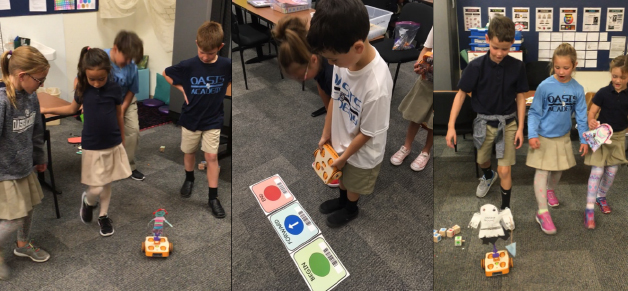K-5 STEM Grant Puts Robotics in the Classroom
Oasis Academy in Fallon already had a Lego Robotics program for grades 3-12. So, when CEO Melissa Mackedon was looking for a way to introduce her youngest learners to robotics, she turned to the Nevada STEM Advisory Council’s list of Recommended STEM Programs and found Kinderlab Robotics. The program uses a KIBO robot kit specifically designed for children aged 4-7. Oasis then applied for a K-5 STEM grant from OSIT to fund the kits and associated professional development.
“KIBO has proven to be an amazing program for our youngest learners. The students use the engineering design process to correctly program their robots, and the best part is- it requires no screen time!” says Mackedon.
With KIBO, students learn to code with wooden blocks. Students create a sequence of instructions (a program) using the blocks and the robot carries out the instructions. Students learned how to program the robot through a maze and how to make the robot dance.

From left to right: Second grade students programmed their KIBOS to do the Hokey- Pokey; Kindergarten students learn how to sequence and scan blocks to program the KIBO to move according to the task they have been assigned; Students are able to incorporate creativity in KIBO as well science and engineering.
“The best way to get students excited about science and engineering is to engage them very early on in hands on projects that they cannot wait to work. KIBO has certainly delivered in that regard. Our students have absolutely loved working these robots.”
Indeed, the students were eager and articulate in their explanations of how the robots could be programmed to do the hokey pokey. There was universal agreement that robotics was their favorite subject.
Research finds that early exposure to STEM, especially for girls, makes children more likely to succeed in science and pursue STEM fields in college. OSIT awarded K-5 STEM Grants to innovative applications that increase the use of evidence-based, hands-on, experiential STEM learning in grades K-5.
